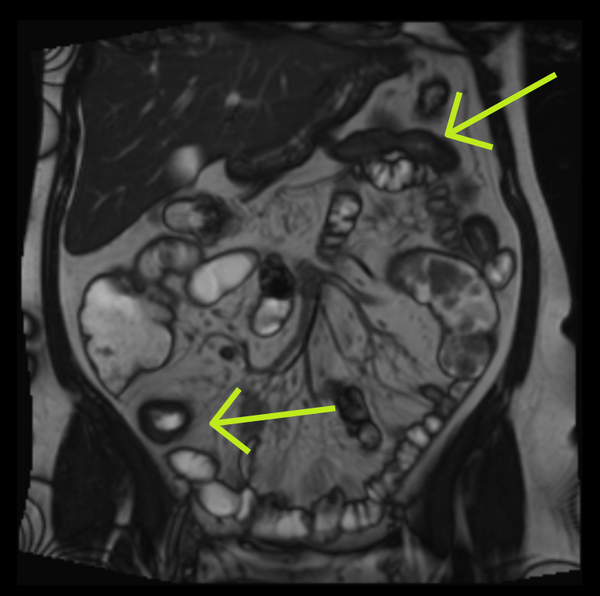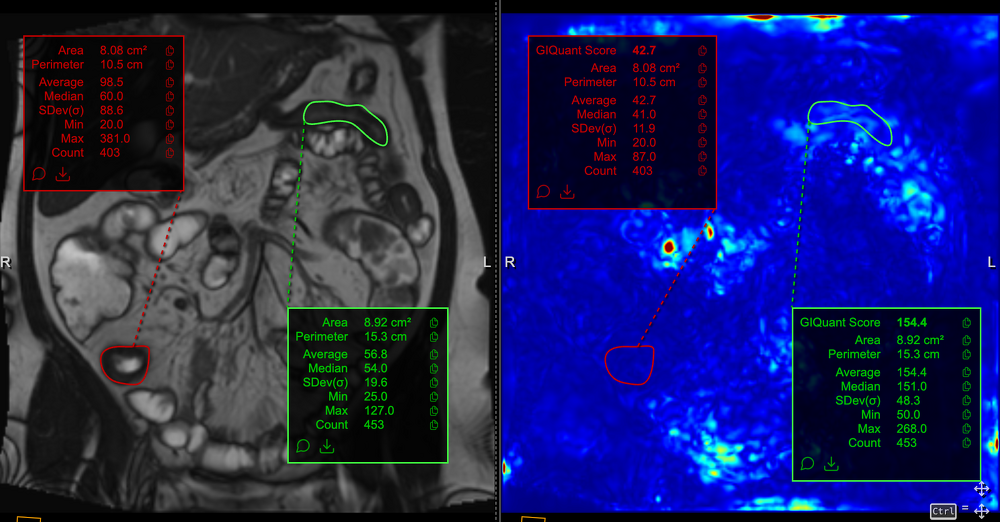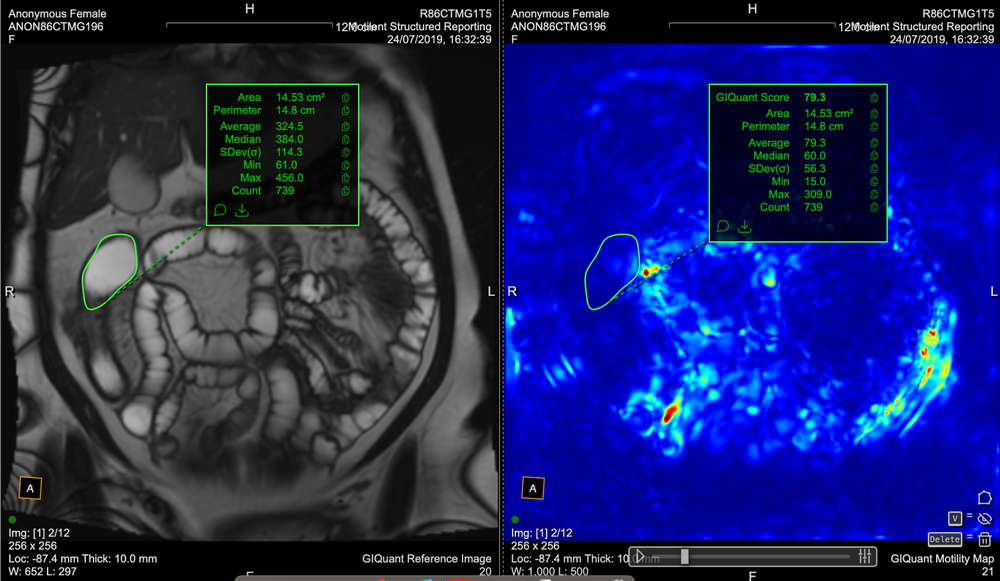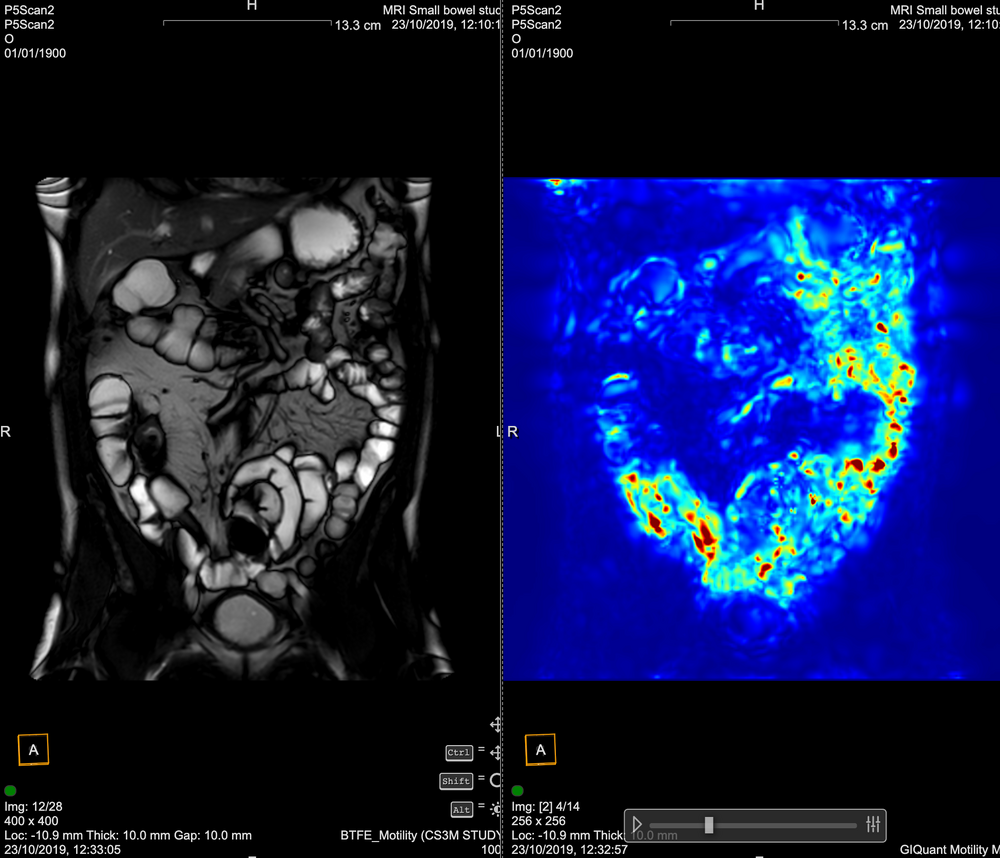
Diseased or not diseased?
This MRI of the bowel (MRE) shows a suspicious region of bowel (bottom left) at the terminal ileum of a patient with Crohn’s Disease - characterised by a thickening of the bowel wall.
In the top right is also a thickened bowel loop, but is this also Crohn’s?





